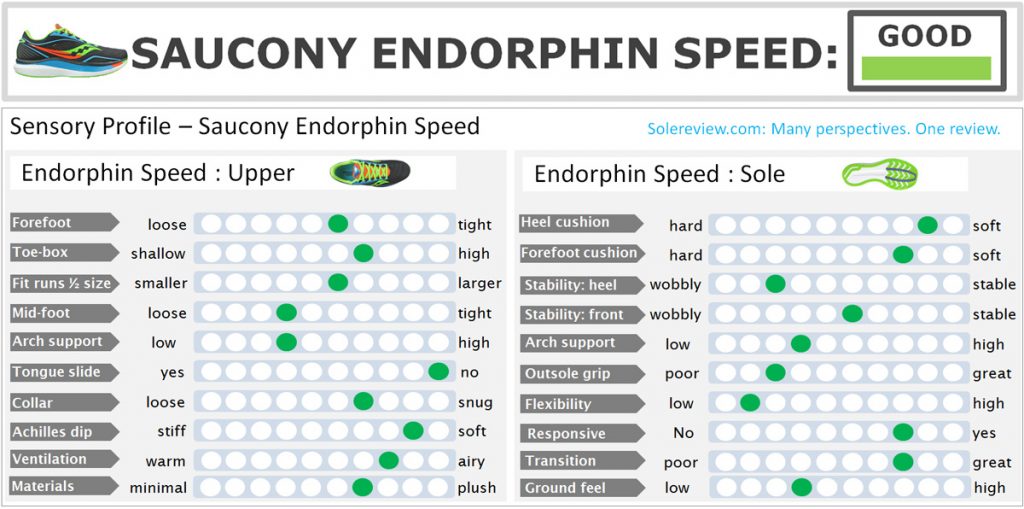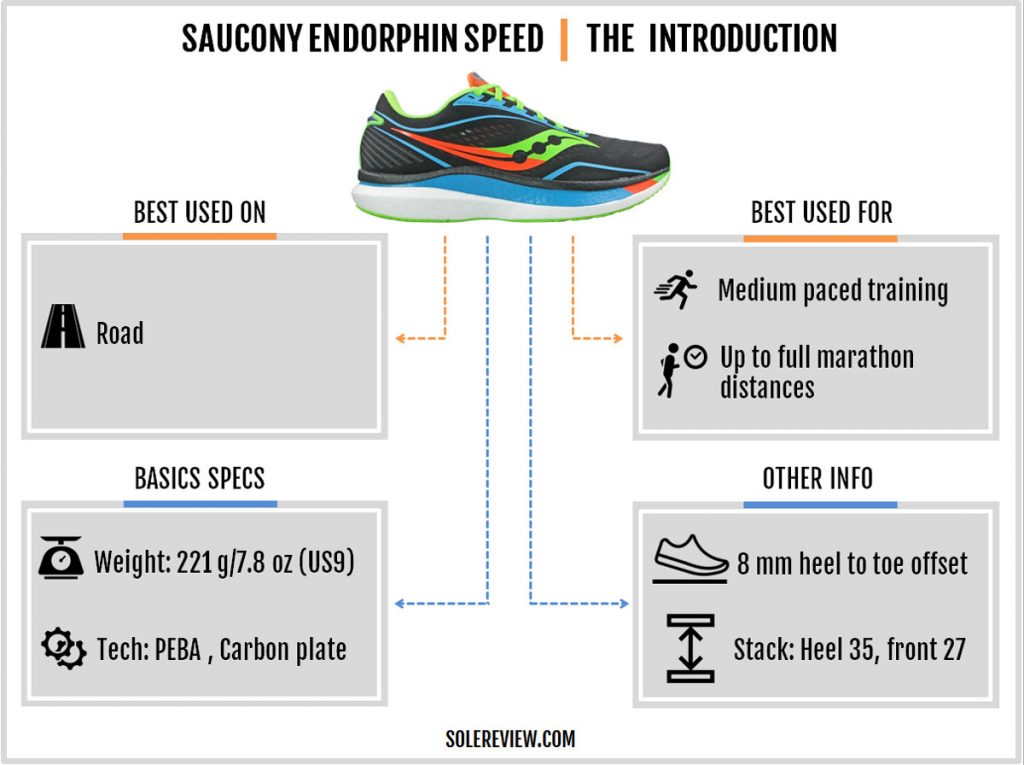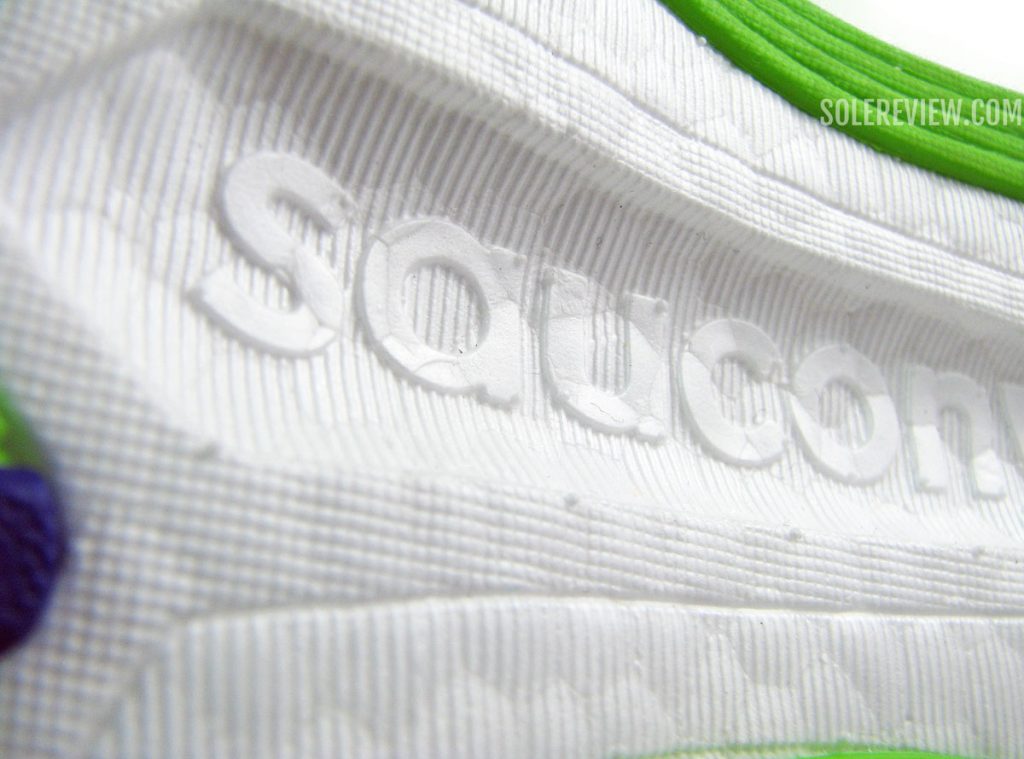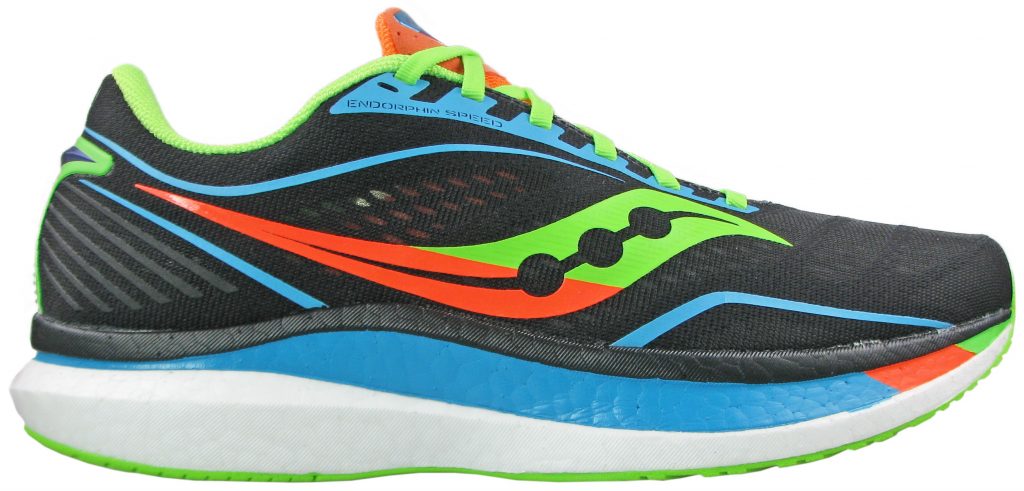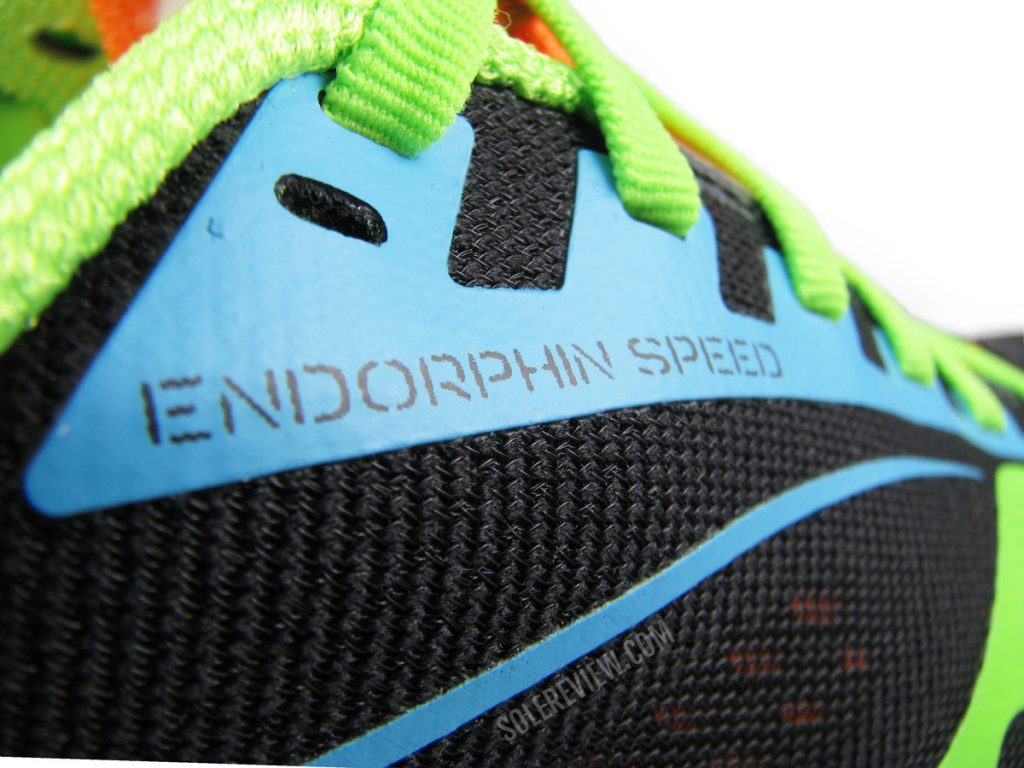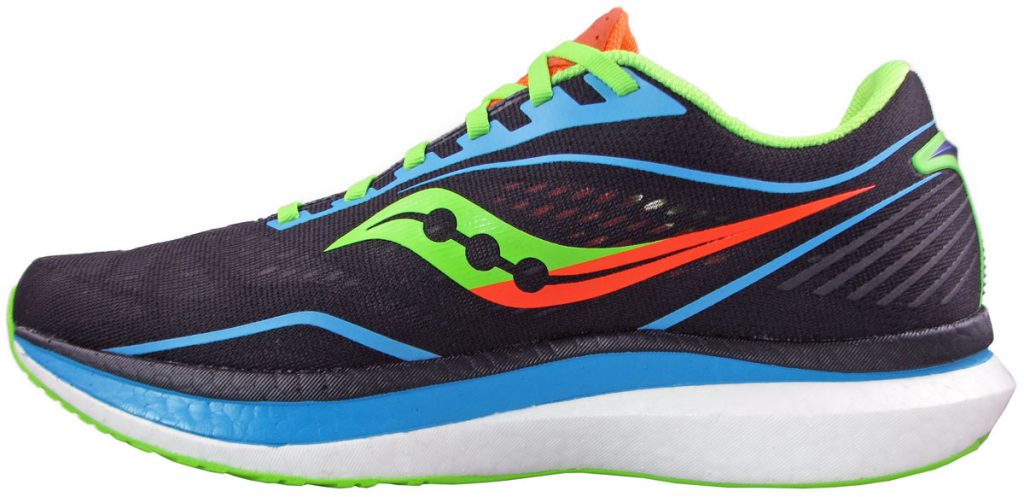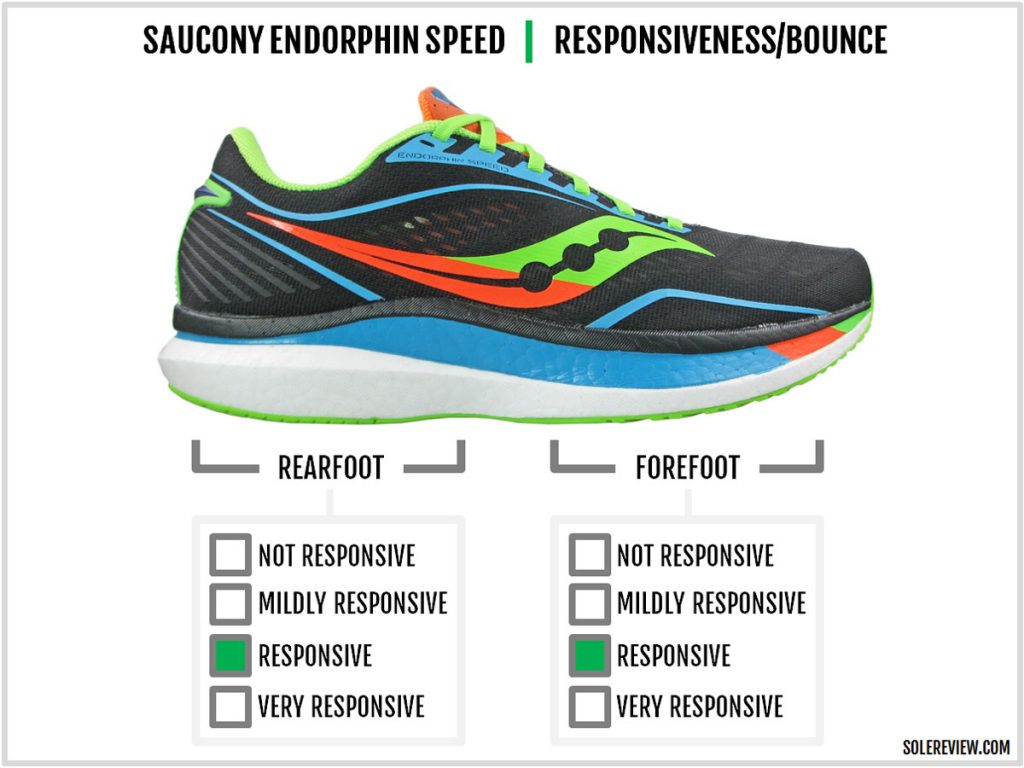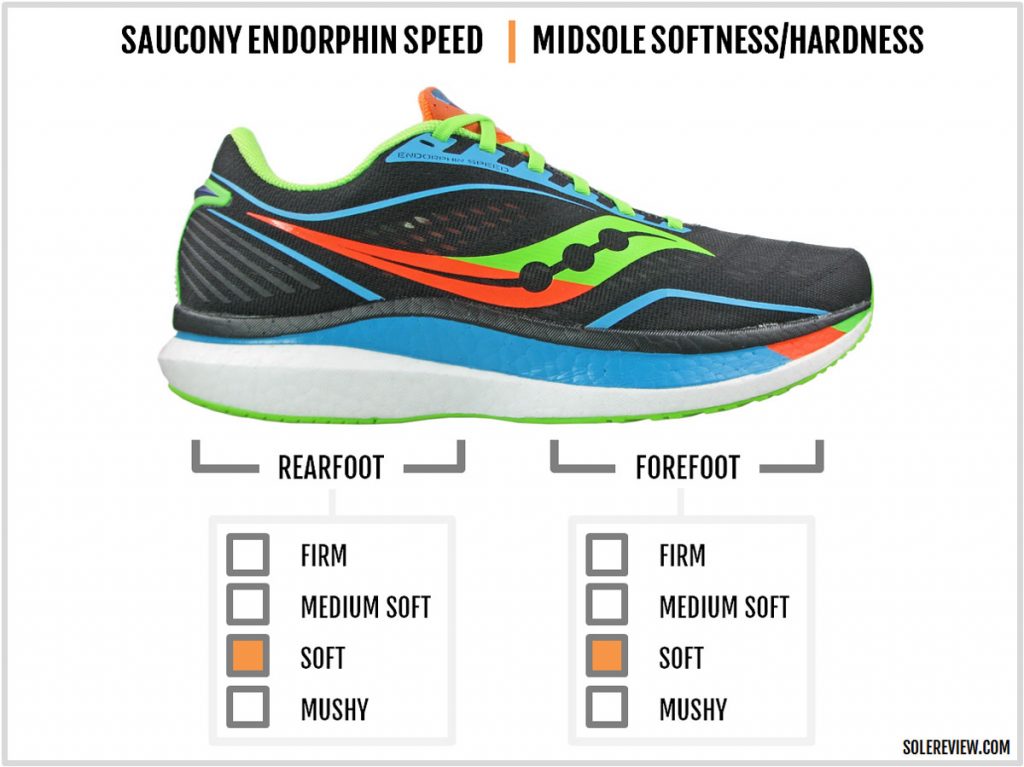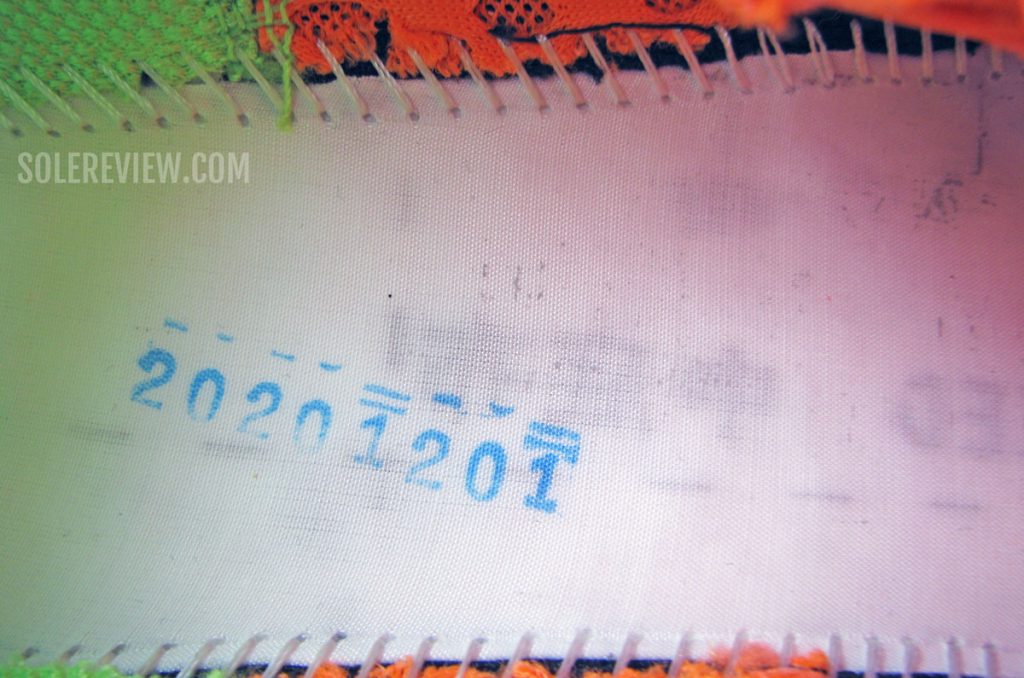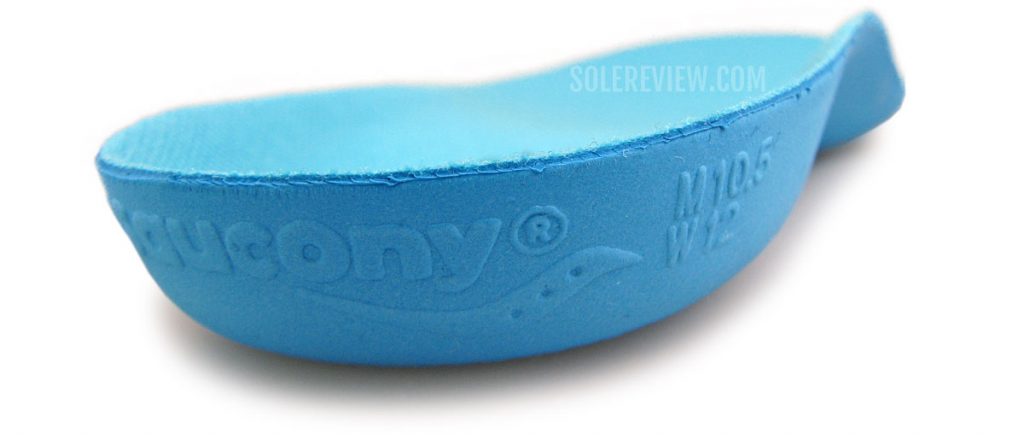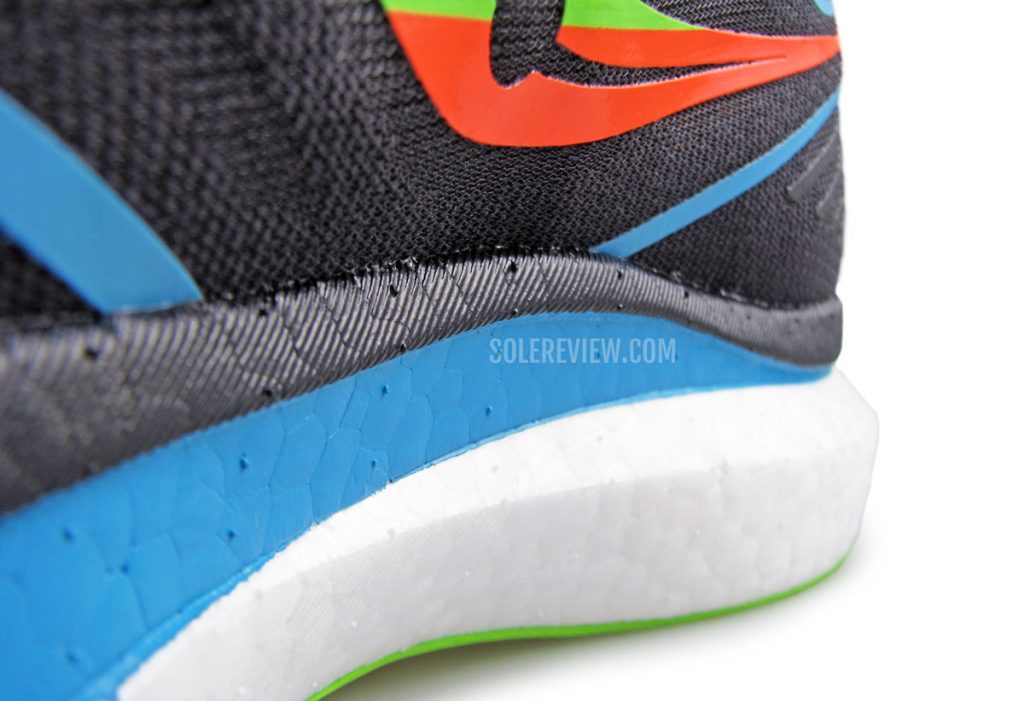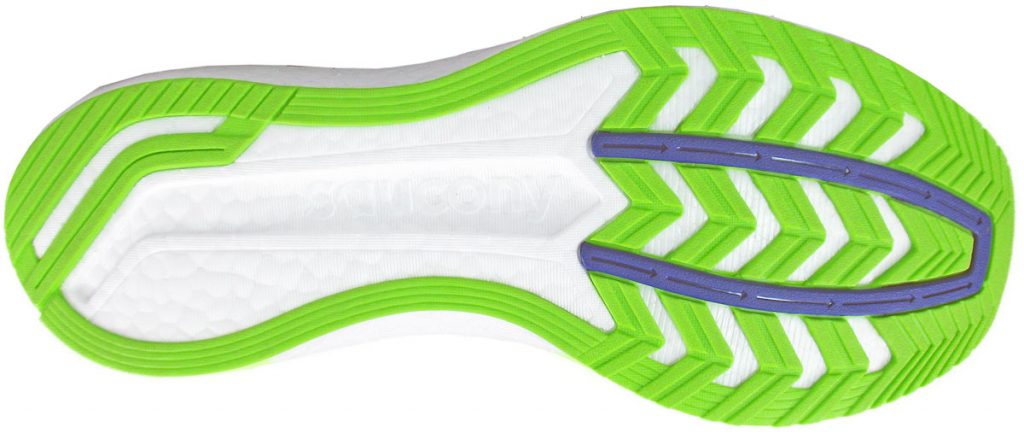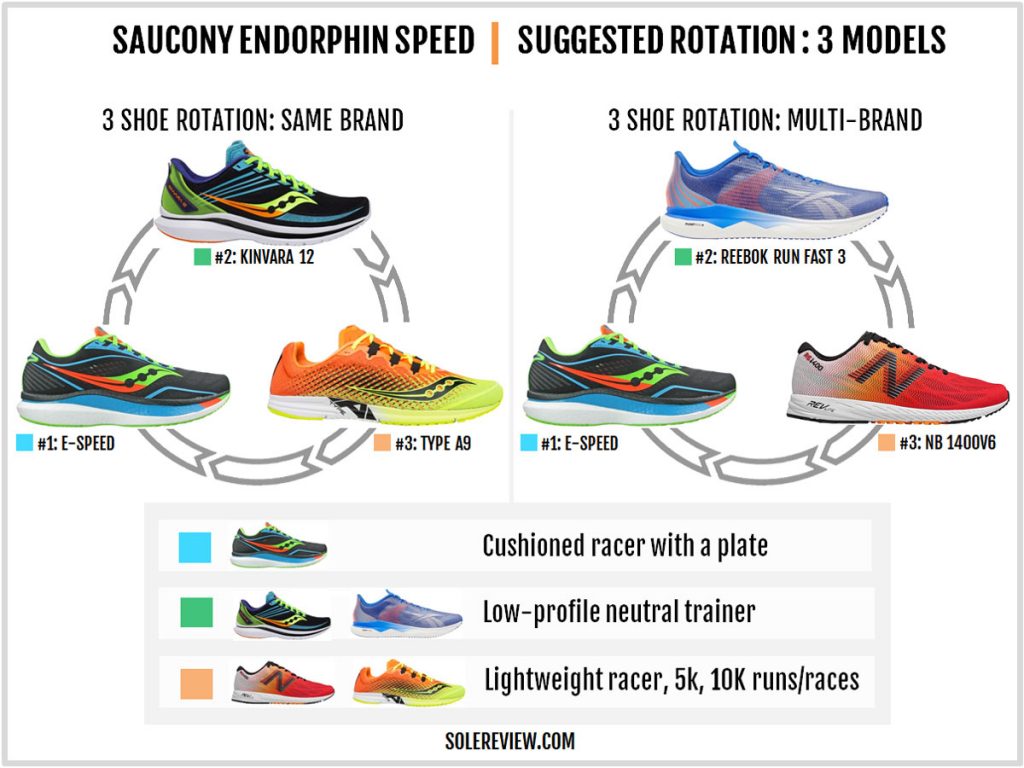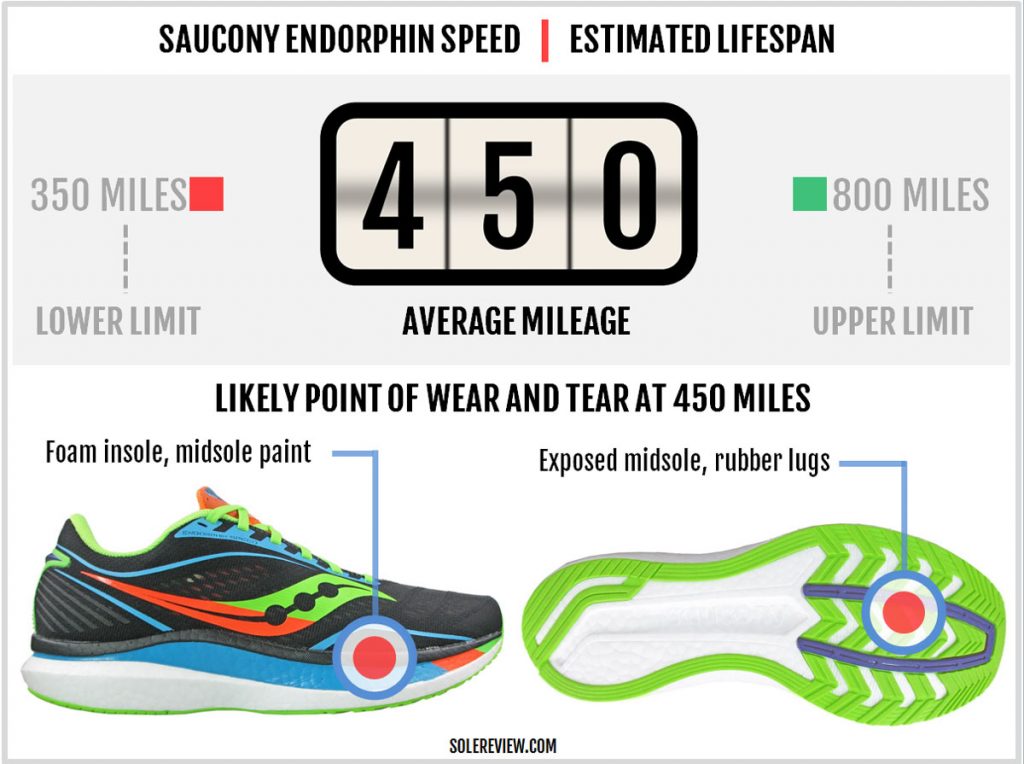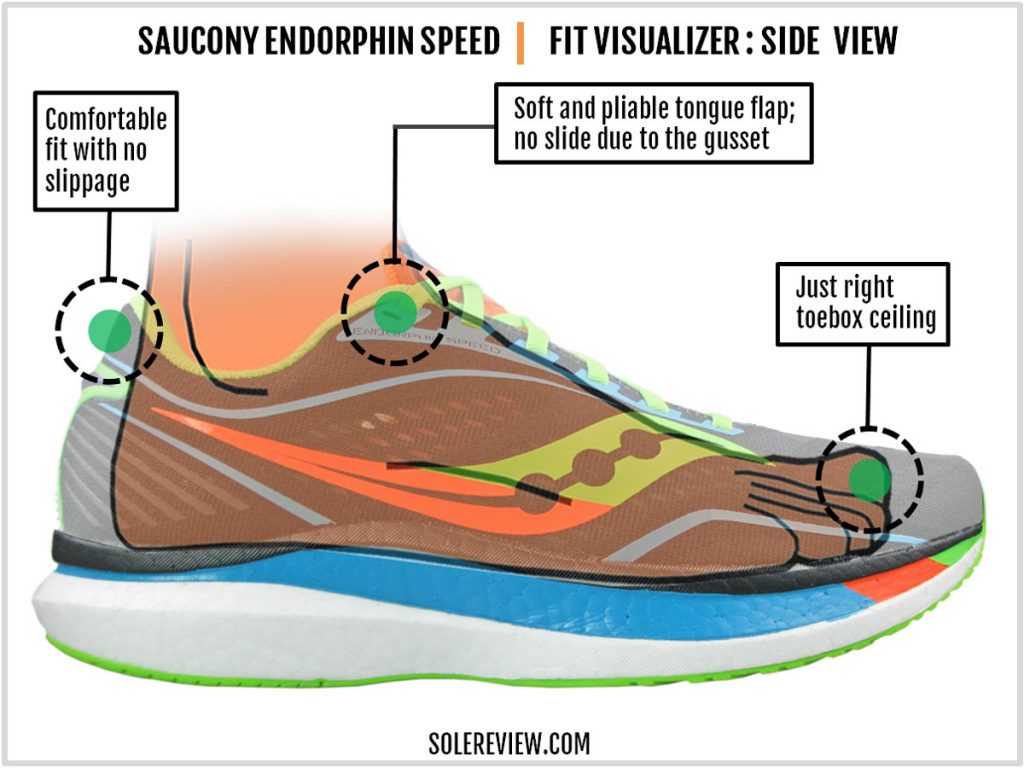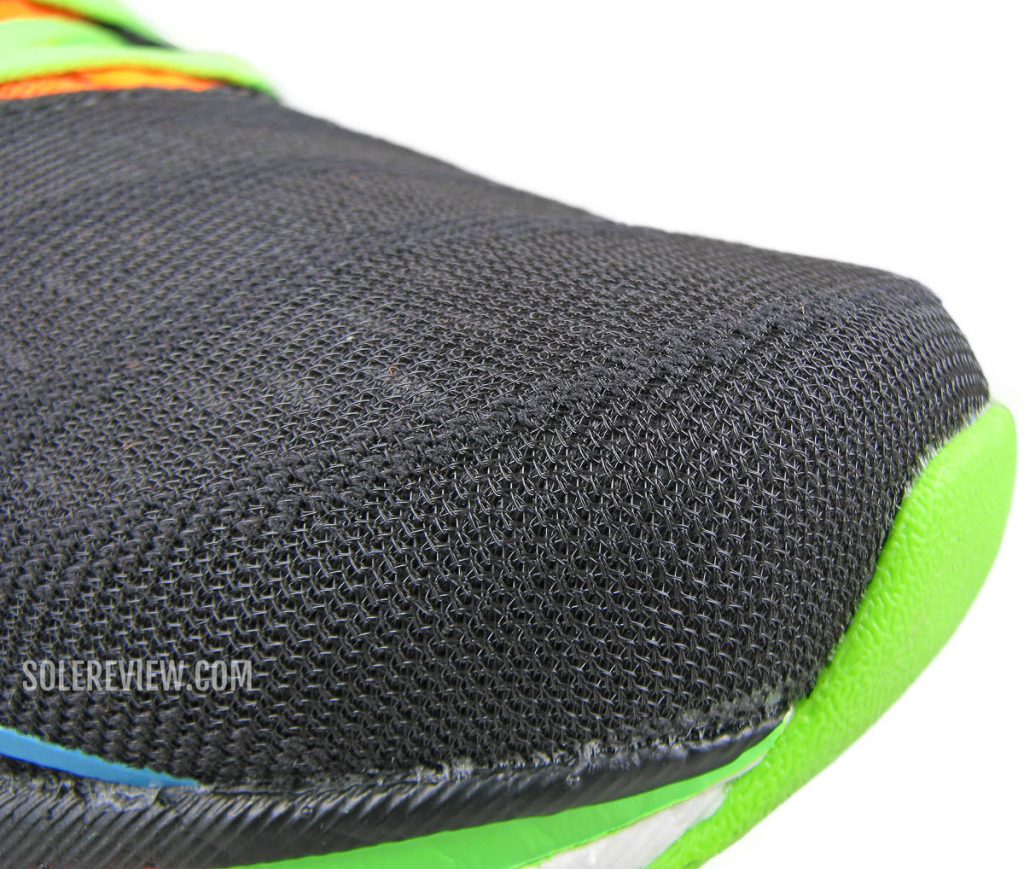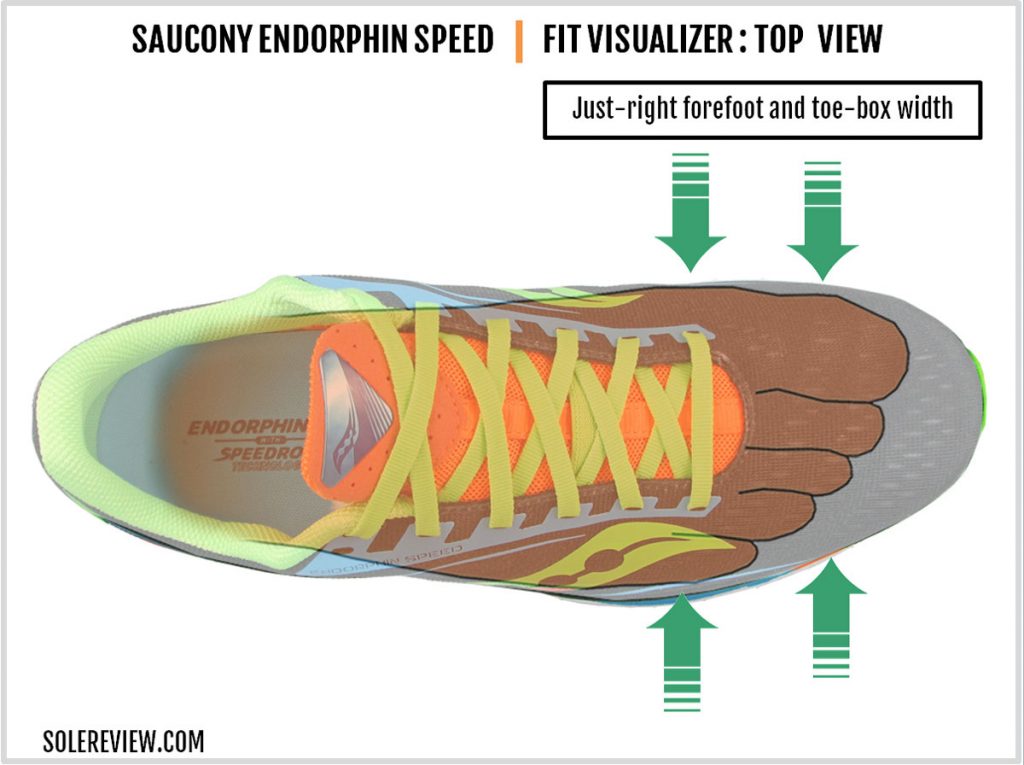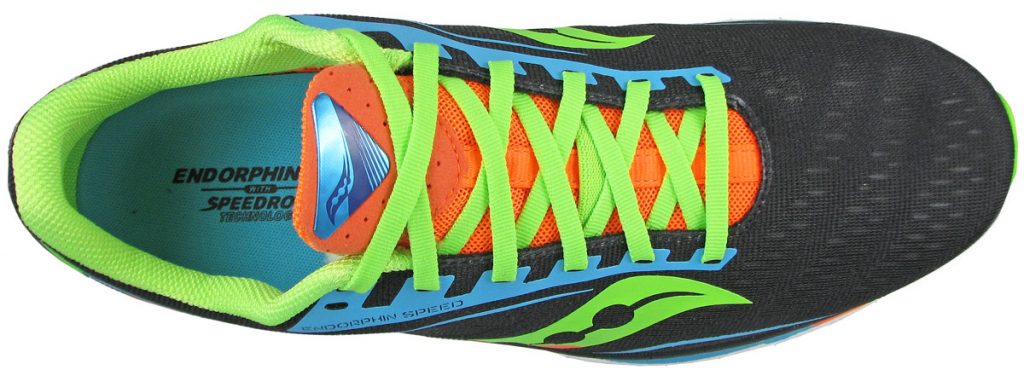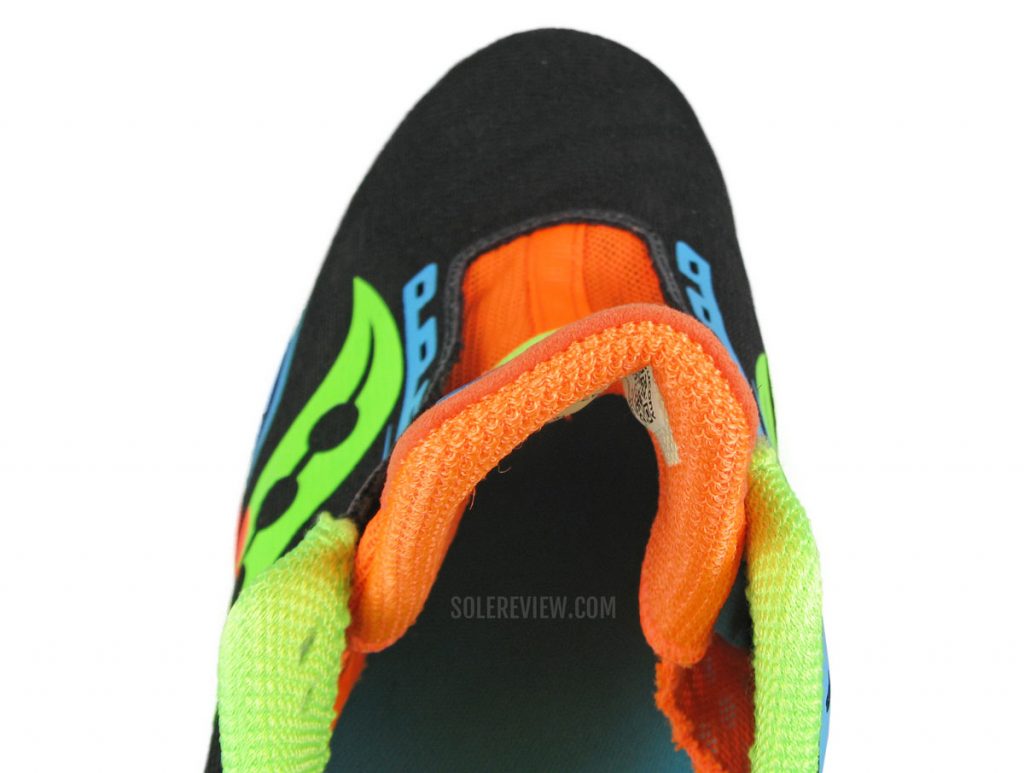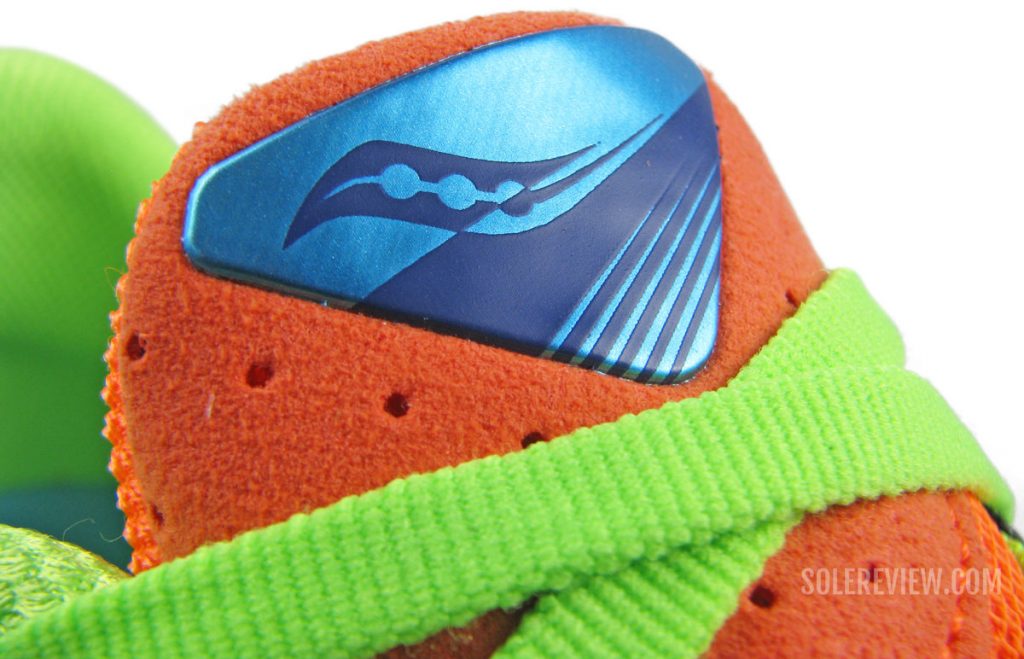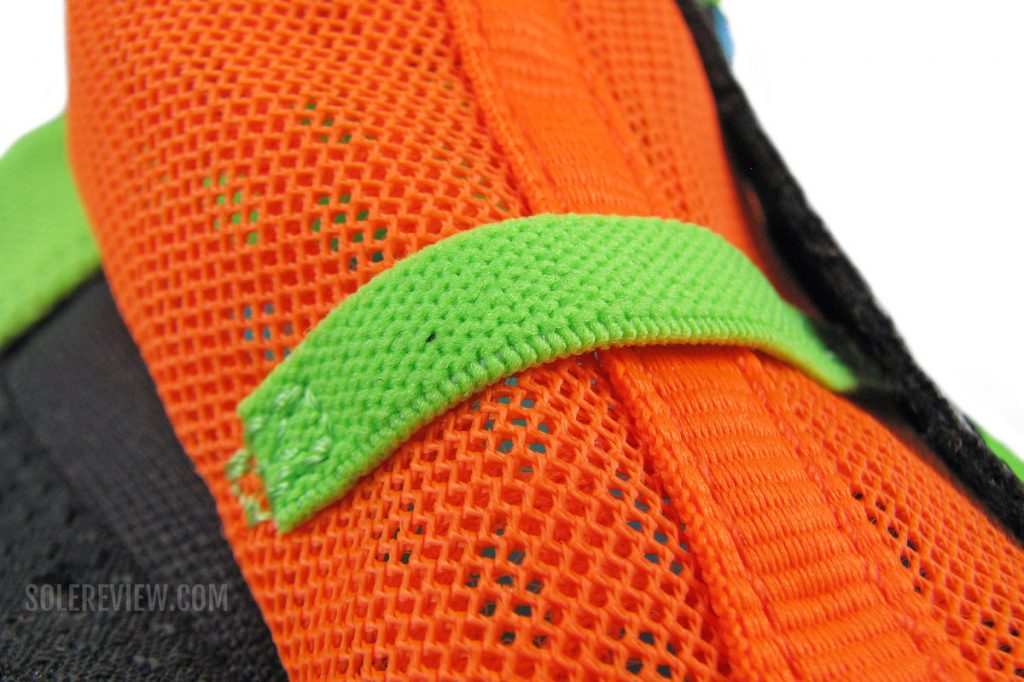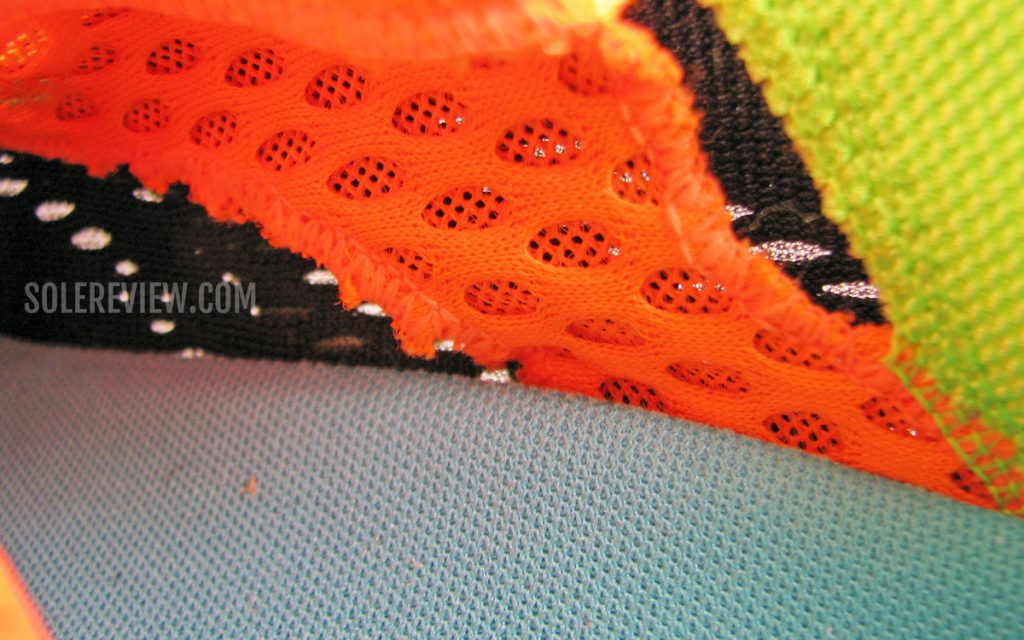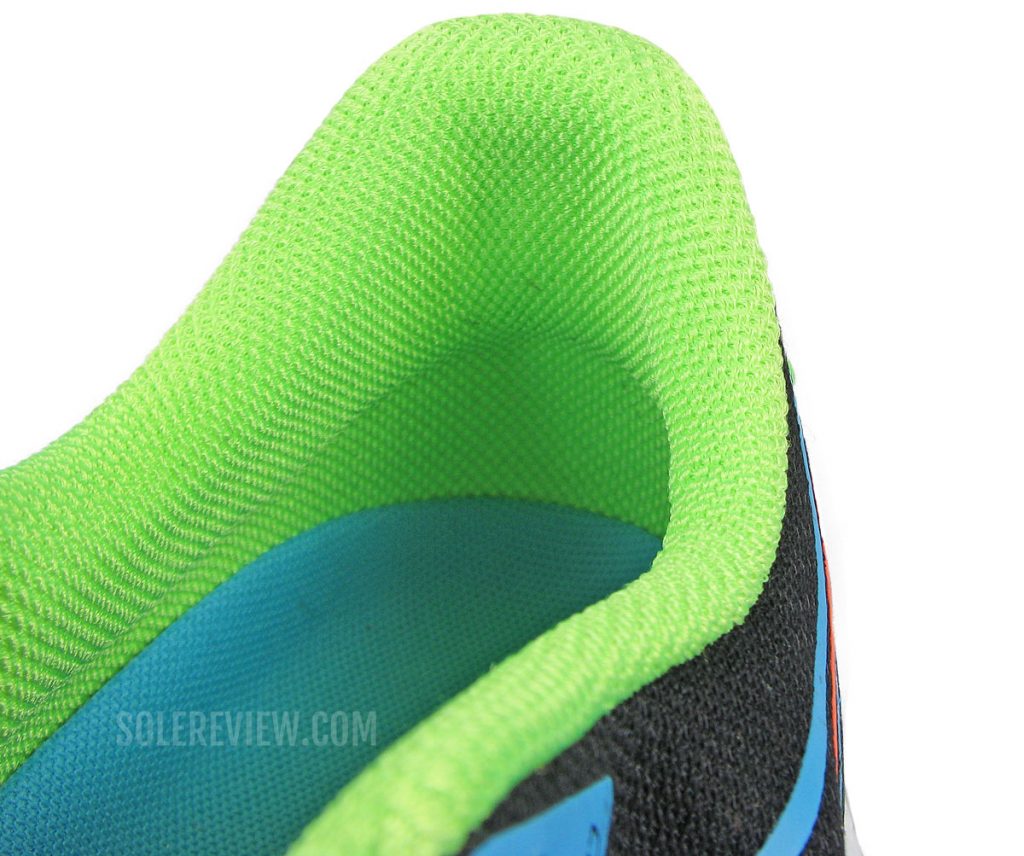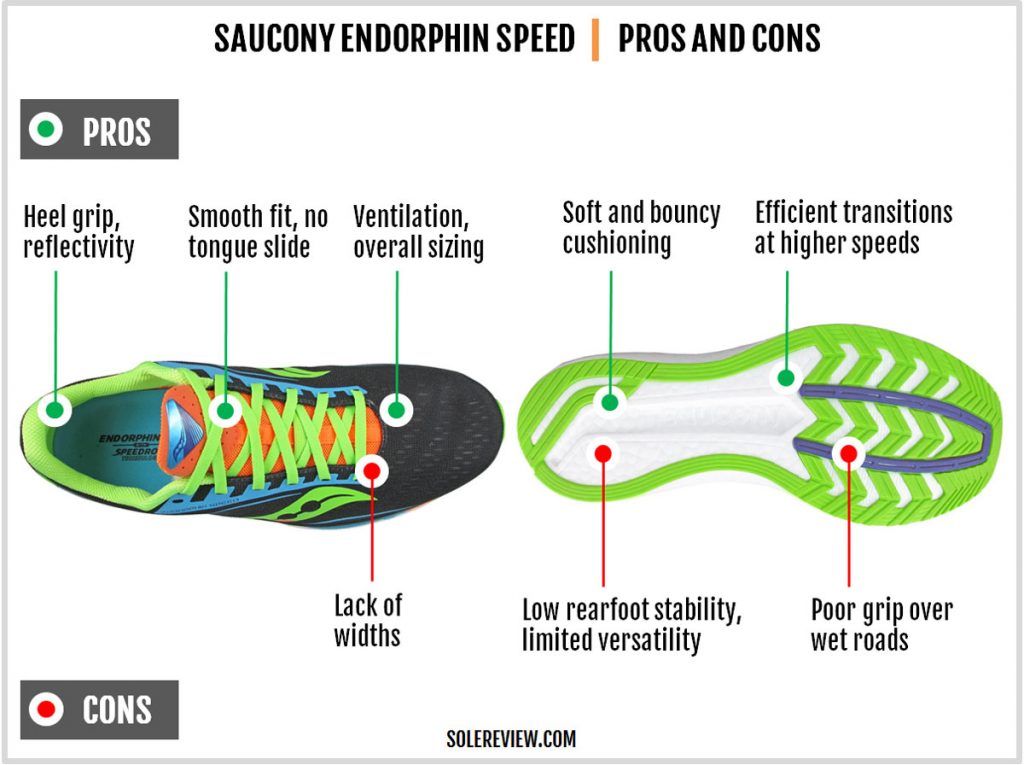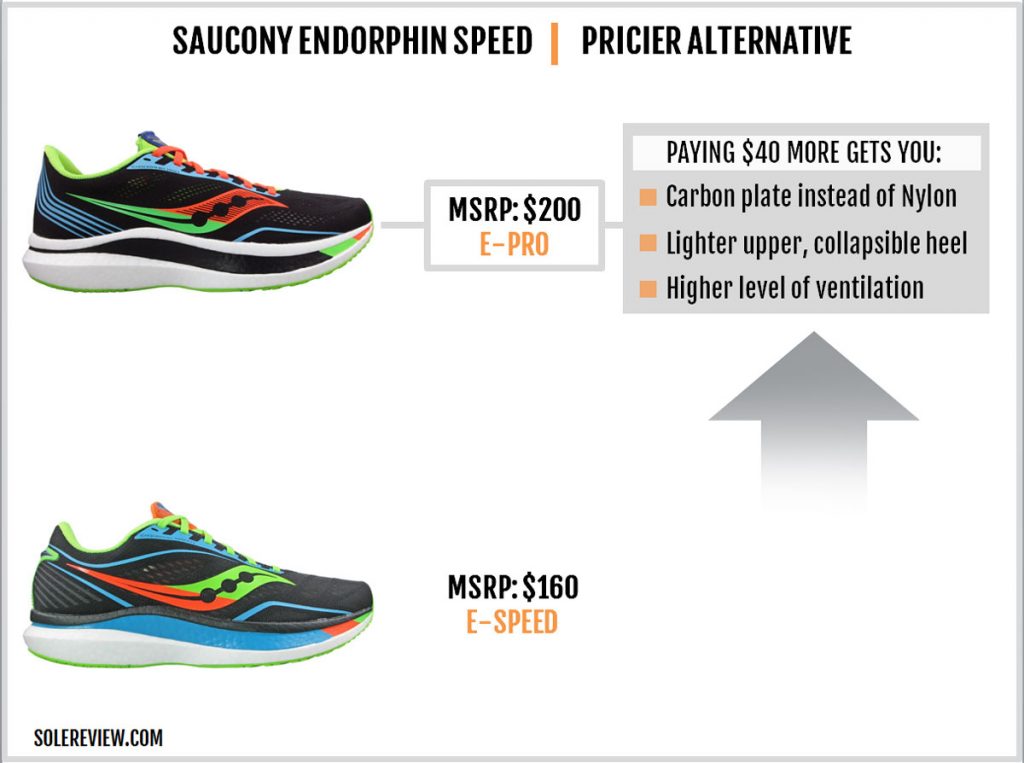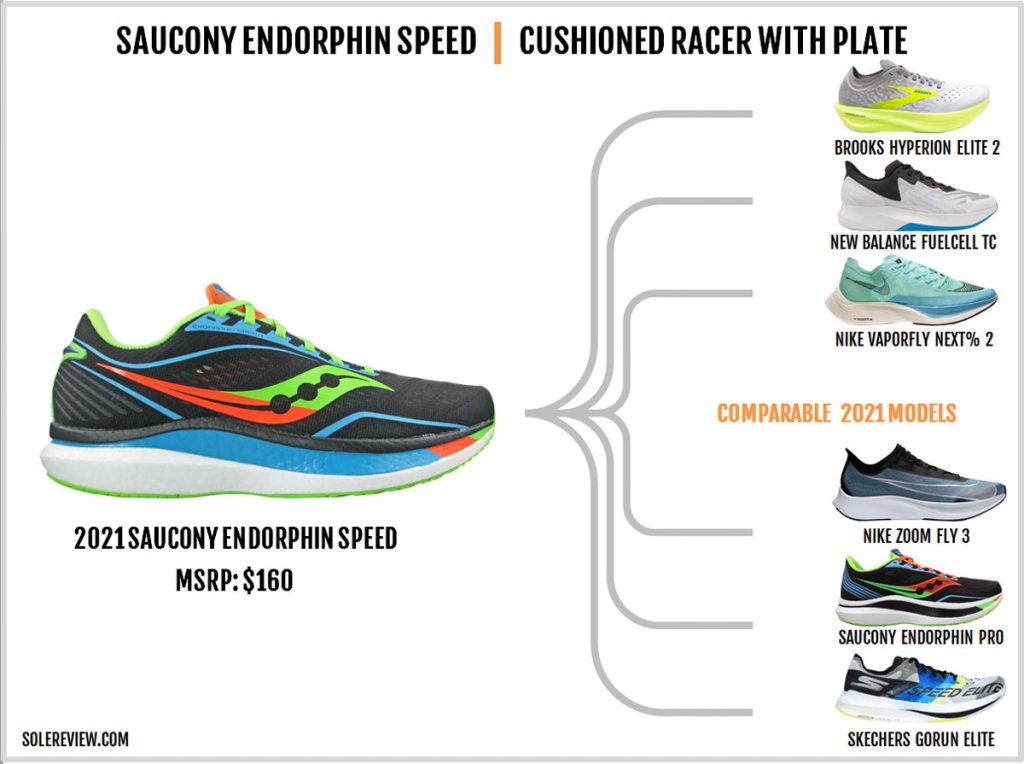INTRODUCTION
Saucony has become rather adept at making value-added improvements on top of existing footwear tech.
We saw that happen with Everun – a firmer version of the adidas Boost. Then came the Pwrrun PB – a PEBA-based midsole foam that is vaguely inspired by Nike ZoomX and Reebok Floatride.
However, the Pwrrun PB looks nothing like those two. It even feels different under the foot. If the Saucony foam is based on the same material, then why does the ride character differ?
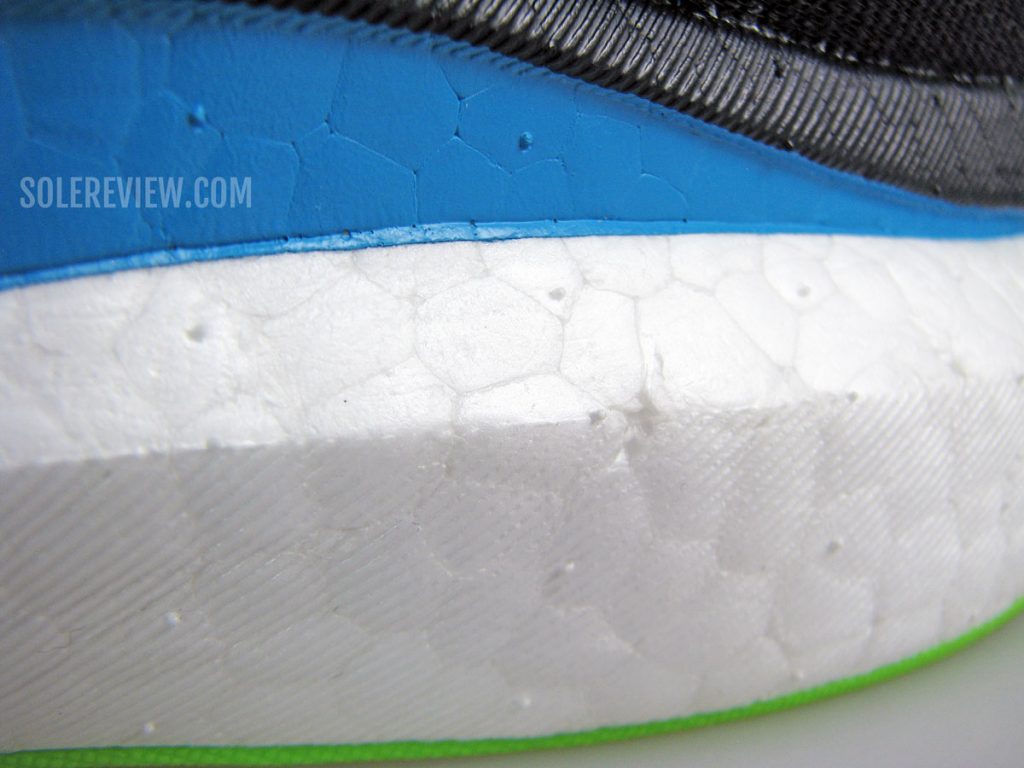
Pwrrun PB looks like adidas Boost, but it isn’t. This foam is PEBA – a significantly lighter material.
A closer examination of the Pwrrun PB foam answers that question.
The same production method that produced Saucony’s e-TPU based Everun foam is also employed for Pwrrun PB. Here, the hundreds of PEBA-foam globules are molded together. The surface texture bears a close resemblance to the adidas Boost, except that it’s made of PEBA foam and not E-TPU.
Therefore, the cushioning experience isn’t delivered by one giant chunk of foam, but through a cluster of foam pellets that work together as a single unit.
This is why the Pwrrun PB feels more resilient; the cushioning softness feels more controlled, and hence, tighter?
So what happens when an internal plate – made of Nylon in the Endorphin Speed’s case – is mated with this unique midsole foam? It delivers a ride experience that shares its ‘springboard’ effect with shoes like the Nike Vaporfly.
The suspended end of the Nylon plate makes the rearfoot snappy, whereas the tethered part – namely the forefoot – makes swift turnovers possible.
While products such as the Endorphin Speed/Pro and Nike Vaporfly employ different means to deliver their cushioning experience, they achieve a similar objective.
The Saucony Endorphin Speed is a cushioned, high-mileage racer with a snappy plate-infused ride that makes speed runs enjoyable. Long-distance sessions in the Endorphin Speed are a lot of fun, and it’s also worth mentioning that this is the only plated running shoe with a PEBA midsole at $160.
The identically-priced Nike Zoom Fly 3 has a carbon plate, but that’s housed in a relatively pedestrian React foam midsole.
Most will agree that this Pwrrun PB shoe has a very likable personality.
But there are questions. Is it versatile enough? What’s the outsole grip like? Is it durable? And does Saucony’s novel PEBA-midsole adaptation address concerns with rearfoot stability? And how does the Speed compare with the Endorphin Pro, considering both variants are based on PEBA midsoles?
That’s what this review about – here, we’ll lay out the good and the not-so-good.
THE RIDE EXPERIENCE
Combining a bouncy PEBA midsole with a full-length plate can be a tricky, yet rewarding business. We first saw that play out in the Nike Vaporfly 4%, and several others thereafter.
Here, we refer specifically to those shoes that rely on the plate to deliver the ‘spring-loaded’ cushioning experience. Running shoes like the Asics Metaracer have a midsole plate, but that only delivers a transition-friendly effect rather than a springboard snap.
In the Endorphin Speed’s case, the rewards are available in the form of a spring-loaded rearfoot and transition-friendly forefoot.
The suspended end of the plate acts as a propulsive device and a springboard of sorts. The Nylon plate blends well into the midsole to work as a cohesive unit; it doesn’t feel like a separate component pushing against the foot.
The base of the plate is affixed to the forefoot and makes it stiff. For a speed-focused shoe, an inflexible forefoot happens to be a desirable trait. A stiff front produces quick transitions, and thus favors higher speeds.
In the Endorphin Speed’s case, the inflexible midsole helps the foot roll swiftly at the end of the gait cycle.
Saucony’s name for this geometry is quite apt – they’ve termed it the ‘Speedroll’.
Speedroll is an excellent name and a fitting description of how the midsole behaves.
Despite the soft and bouncy nature of the PEBA midsole, there’s no sense of wasted effort. The Endorphin Speed and Pro deliver their optimal performance at higher speeds (say, around 4:30 min/km, 7 min/mile) than at easy paces.
We guess that’s the magic of PEBA foams; no running shoe with a midsole made of this material has disappointed so far. It’s as awe-inspiring as the early days of adidas Boost; everything else pales in comparison. Of course, that’s until the next big thing arrives.
The Endorphin Speed has rear and front stack heights of 35.5 mm and 27.5 mm, respectively. If you’re doing the maths, that’s an 8 mm heel-to-toe offset for you.
We’re glad that Saucony chose a (more) friendly offset of 8 mm for both the Speed and Pro variants. This is one shoe where the static (published) offset and dynamic (loaded) offset differ by a large margin due to the soft heel.
Thus, making it a 4 mm offset shoe would have effectively made it a zero or even a negative drop shoe during runs. From a ride perspective, that would have put unwanted stress on the Achilles tendon and calf muscle.
Interestingly, the Endorphin Shift has a 4 mm drop. But that’s a much firmer shoe with a negligible variance between stated and actual heel drops.
The high stack contains a deep reservoir of springy cushioning. Nothing, except for the removable insole, creates a barrier between the foot and PEBA midsole. There is a lasting, but it’s very thin and plays no role in the cushioning setup.
The 8 mm gradient doesn’t make the Endorphin Speed averse to forefoot strikers; it’s quite the opposite. The midsole and outsole design make forefoot/midfoot landings and transitions very easy, and it is yet another example of why we should not blindly assume a higher offset shoe to be just for rearfoot strikers.
The heel midsole doesn’t have a pointy end sticking out; the edge of the outsole is (almost) vertically aligned with the heel counter. So the Endorphin Speed behaves like how any running shoe with no midsole overhang does – midfoot landings take place without having to exert any special effort.
Even though the heel has excellent cushioning and responsiveness, rearfoot landings are undesirable on the Saucony Endorphin Speed – especially if that takes place under low speed conditions. This is where we get to the ‘tricky’ part of the Endorphin Speed’s form factor.
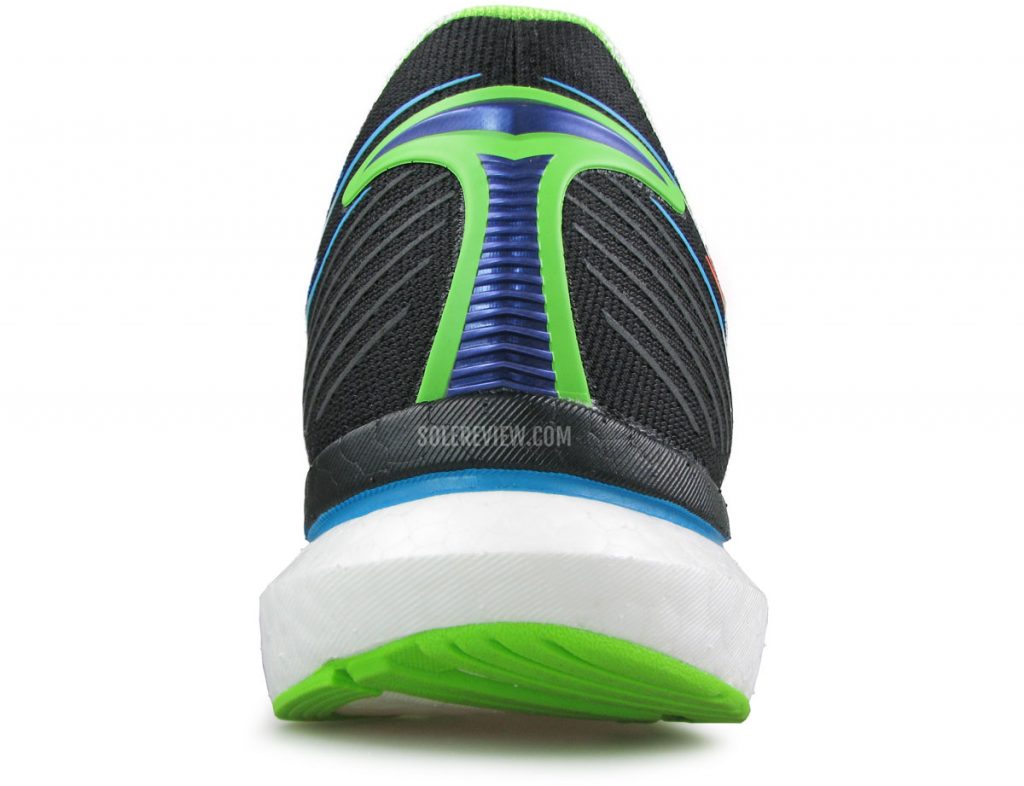
The midsole has flared sidewalls for support. However, the heel is unstable for rearfoot strikers at slow speeds. The dark-colored stripes on the sides are reflective.
To Saucony’s credit, the midsole has flared sidewalls. Based on our experience, this midsole profile is usually beneficial for stability. However, there’s a limit to what even a flared sidewall can do; it’s difficult to contain the uber bounciness of the Pwrrun PB midsole.
The soft material also shears sideways, so neither the Endorphin Speed nor Pro are suitable for track interval or routes that involve turning into fast corners. While it can keep up with blistering 5K paces, we’d rather prefer a proper racing flat for short-distance blasts.
It does ok on the treadmill, but there are superior alternatives. Off-road use is an absolute no-no.
Though the ride is pretty neutral, one should avoid the Endorphin Speed if the inwards rolling of the foot is a concern. That said, the faster one goes, the less concerning the lack of stability is. At higher paces, the foot doesn’t ‘dwell’ long enough to experience the side effects of the bouncy midsole.
Thus, rearfoot stability isn’t the Endorphin Speed or Pro’s strongest suit. With each step comes a brief moment of instability before the shoe auto-corrects itself. Landing rearfoot and running slow will amplify this aspect, so the Endorphin Speed isn’t your easy-day cruiser.
The forefoot stability fares well due to the stiff base of the plate; no complaints there.
The outsole traction on wet surfaces is surprisingly poor. The loss of grip becomes very noticeable once the shoe encounters a damp patch on the road.
Both the Endorphin Speed and Pro have a harder set of rubber ‘rails’ that increase the durability but make the outsole slippery. The surrounding rubber lugs are softer and grip better.
Immediately after contacting a wet surface, there’s a noticeable sense of slippage when the foot kicks back during the take-off phase. We can only assume that the grip will be worse on wintery roads.
On dry roads, the lack of an aggressive outsole lug pattern doesn’t translate into a loss of grip. It’s not great, but there’s no cause for concern either. The outsole is thin and has lots of ‘windows’ exposing the midsole foam. This construction allows the outsole to (better) integrate into the midsole without making itself felt like a hard layer.
So – is the Endorphin Speed versatile?
Not very, we’re afraid. On one hand, the E-Speed excels in many areas. The PEBA foam midsole delivers dependable cushioning mile after mile, the kind that keeps the foot fresh over lengthy runs. That includes marathon-level distances and long weekend runs.
The embedded Nylon plate makes the ride incredibly lively and fun. The low weight (221 gms/ 7.8 Oz) results in an easy and light-wearing experience. As long as the Endorphin is used above a certain pace range (faster than 5:30 min/km or 8:50 min/mile), the midsole continues to deliver a rewarding ride experience.
At relaxed paces, the lack of stability results in a sub-optimal experience. It’s worth bearing in mind that the heel roll is more noticeable at slower speeds for a rearfoot striker.
Therefore, it is a good idea to get a couple of rotational flankers. The Saucony Kinvara 12 or the Ride 14 can be that versatile daily trainer that also performs well at lower speeds.
The Kinvara 12 is a lower offset (4mm) and lightweight neutral trainer with plenty of versatility, and so is the Reebok Run Fast 3.
The Ride 14 is a firmer neutral trainer with a higher midsole stack and 8 mm heel-to-toe offset. For a softer ride, the Ride 14 can be substituted with the Brooks Ghost 13 instead.
Semi-flats like the Saucony Type A9 and New Balance 1400V6 are perfect for going short-distance runs or races at flat-out speeds.
IS THE SAUCONY ENDORPHIN SPEED DURABLE?
The outsole traction may not be great on wet roads, but in return, it delivers excellent durability. The flat lugs take daily wear and tear in their stride, and the PEBA midsole offers long-term cushioning retention.
Some scuffing is noticed on the exposed parts of the midsole – this is the section between the outsole lugs. However, that’s not going to adversely affect the ride character.
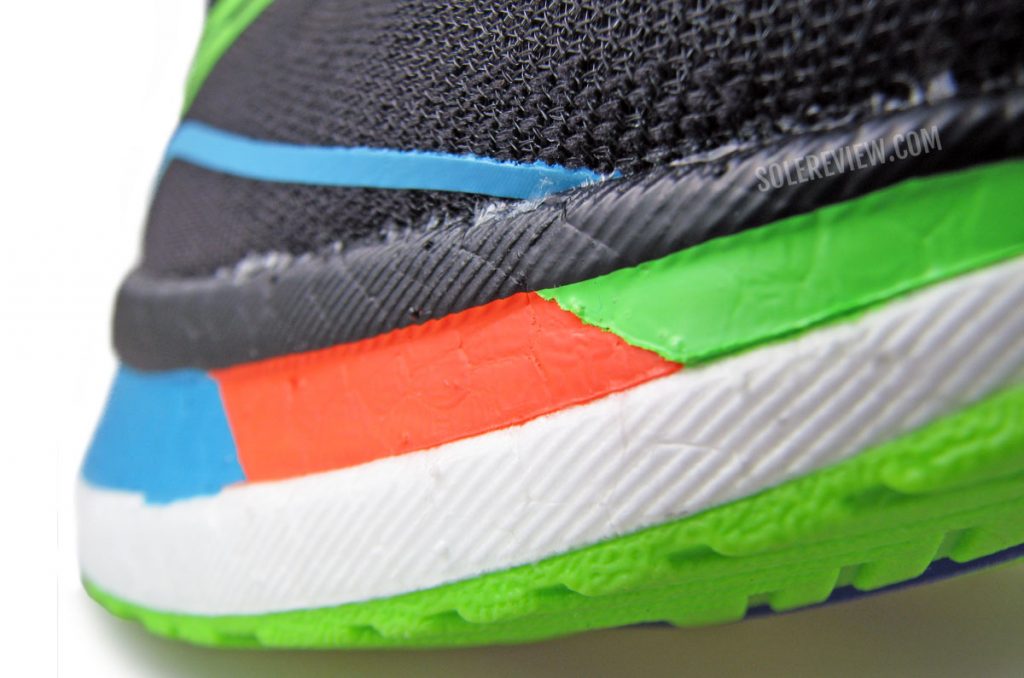
We haven’t experienced any paint flaking yet, but no loss if it does – it’s just a superficial coat with no bearing on the overall performance.
We haven’t seen the midsole paint chip off yet, but even if that happens, it’s just superficial with no performance downsides.
THE UPPER DESIGN AND FIT
The upper fit of the entire Endorphin Series is so, so good.
We said that of the Endorphin Shift, and the same praise is reserved for the E-Speed. Later on, we’ll probably offer a similar opinion on the Kinvara 12 – a shoe whose design is inspired by the higher-priced Endorphin twins.
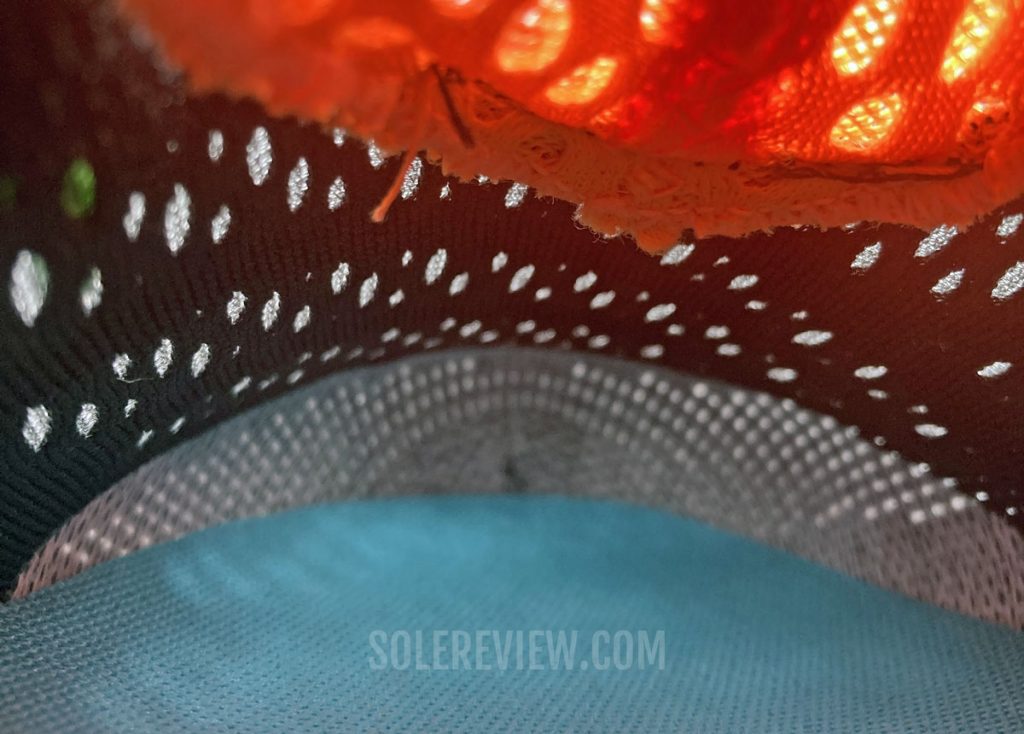
The toe-box allows the foot to splay, and ventilation is decent too. The white portion is the internal bumper.
Saucony uses a soft mesh that breathes well. Though it’s not elastic, the forefoot and toes do not feel boxed-in at all.
Due to the broad toe-box profile that also includes an internal bumper, there’s a decent amount of toe splay room inside the true-to-size upper.
At the time of publishing this review, no widths are offered in the Endorphin Speed. Though the upper fits a bit snug over the small toe, the overall fit profile will accommodate most runners that usually fit into a standard width.
The length of the soft tongue is perfect. While there’s not much foam padding, the semi-stretch flat laces cinch without applying uncomfortable top-down pressure.
A thin gusset anchors the tongue inside. There’s a small elastic band on top that stretches over the foot and helps the tongue retain its shape.
The heel fit is the reason why we prefer the Endorphin Speed over the Pro. The Speed variant has a full-sized internal counter that adds stiffness – and stability – to the ride.
The Pros’ heel is collapsible, so the heel feels relatively unsupported during the gait cycle.
PROS AND CONS
As long as the Endorphin Speed operates within its ideal pace range, the midsole works as intended. The Nylon plate and PEBA foam midsole deliver the signature plated snap with a side of bouncy cushioning.
On the flip side, the Endorphin isn’t versatile enough to be a rearfoot striker-friendly shoe or a trainer that feels comfortable at slow speeds. Despite the flared midsole, the levels of rearfoot stability are well below the industry median. The outsole slips on wet surfaces, so running on rained-on roads demands caution.
The upper comfort is stellar and almost perfect in how it fits and feels.
THE SAUCONY ENDORPHIN SPEED vs. ENDORPHIN PRO
It may sound a bit odd, but if given a choice, we would choose the Endorphin Speed over the more expensive Pro variant. Both the models have a PEBA-based midsole, with the only difference being the plate material.
Not surprisingly, the Speed and Pro have a similar ride character. Their weights are also near-evenly matched.
The E-Speed has a Nylon component, whereas the Endorphin Pro has a Carbon plate. But here’s where it gets interesting. From what we can tell, the Nylon plate is better blended into the PEBA midsole than the Carbon version.
We won’t know until we have a proper teardown (hopefully soon), but our sense is that the Carbon plate is stiffer than Nylon. Hence, the presence of a plate is more noticeable on the E-Speed. It’s not a negative aspect, but in our opinion, a more cohesive ride character will appeal to a larger population of runners.
The upper is lighter on the Pro model. The mesh is thinner and more breathable, and the heel is collapsible.
Due to the lack of an internal counter, the heel doesn’t feel as locked in on the Pro as it does on the Speed. This also affects the rearfoot stability, because a softer heel results in a higher degree of inwards roll.
The forefoot fit also differs from the E-Speed. The softer mesh exterior isn’t as supportive so the large toe tends to ‘spill’ out a bit during push-offs. It’s not severe, but if that happens, you now know why.
SHOES SIMILAR TO THE SAUCONY ENDORPHIN SPEED
Except for its Carbon plate (versus the Endorphin Speed’s Nylon component), the Saucony Endorphin Pro’s ride and fit character are closely matched.
Though it costs the same as the higher-priced Endorphin Pro, the New Balance Fuelcell TC is somewhat comparable – the full-length plate inside a soft midsole delivers the responsive snap we’re all familiar with. The soft ride is excellent for long-distance comfort.
The Vaporfly Next % V2 and Zoom Fly 3 are two of the original ‘spring-loaded’ racers with a Carbon plate. The Vaporfly rides softer than Saucony because of the higher-volume midsole.
On the other hand, the Zoom Fly 3 has a firmer (and more stable ride). The Alphafly Next% is similar to the VF, except that the forefoot has a Zoom Air bag.
The Brooks Hyperion Elite 2 uses the Nitrogen-infused DNA Flash foam, so the ride is significantly firmer than the Endorphin Speed. That said, the lightweight midsole offers better stability, so we guess the less-bouncy ride is a satisfactory trade-off.
Though the Skechers GoRun Speed Elite Hyper is slightly tangential in how it delivers the ride quality, it’s a worthy plate-fitted option.
Do you own this shoe? Improve this review by sharing your insights – submit a review here.

